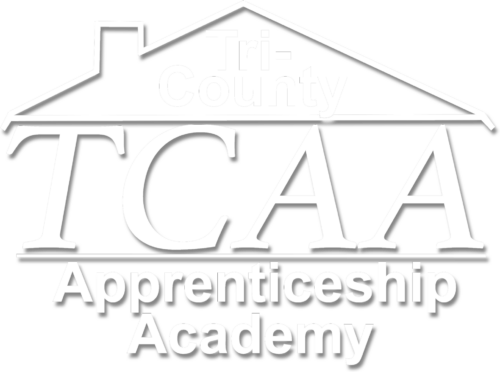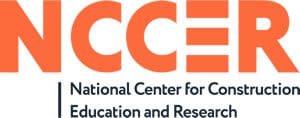Pipe Fitter Apprenticeship
Pipe Fitters Snapshot
Pipe Fitters Often Do the Following:
- Pipefitters plan, prepare, install, and maintain piping and plumbing systems composed of various materials; systems may include pipes, pressure and vacuum gauges, pipeline filters, steam traps, and strainer valves.
- Pipefitters consults blueprints, work orders, schematics, or instructions; creates working procedure based on specifications.
- Pipefitters gather equipment and materials for the job.
- Pipefitters weld, cut, bend, thread, solder, and fit pipes.
- Pipefitters attach pipe and piping systems to walls using brackets, bracket systems, or clamps; cuts or bores holes prior to project.
- Pipefitters install various types of insulation and pipe covering; safely removes and properly discards of old coverings according to hazardous waste procedures and in accordance with EPA and OSHA requirements.
- Pipefitters inspect pipes, testing for pressure and leaks; reports and/or resolves problems.
- Pipefitters at advanced levels coordinate with manager to schedule machinery maintenance, repairs, and installation to minimize disruption to operations.
- Pipefitters comply with applicable safety and building codes, regulations and best practices.
- Pipefitters maintain records, including safety logs and inspection details.
TCAA’S CURRICULUM is Nationally Accredited with the National Center for Construction Education and Research (NCCER)
Pre-Requirement for Pipe Fitter Apprenticeship is that all apprentices are required to pass and complete our NCCER Core Curriculum
Pipe Fitter Apprenticeship Year 1
Orientation to the Pipefitting Craft:
- Provides an overview of work performed by the pipefitter, as well as the responsibilities, career opportunities, safety principles associated with the pipefitting trade, and the types of pipes and tools pipefitters will encounter
Pipefitting Hand Tools:
- Covers hand tool safety as well as procedures for selecting, inspecting, using, and maintaining hand tools used by pipefitters. Introduces the most common hand tools used in pipefitting, including pipe wrenches, pipe stands, pipe vises, levels, pipe fabrication tools, pipe bending tools, and pipe joining tools.
Pipefitting Power Tools:
- Covers the safe operation of power tools used to cut, grind, thread, and shape all types of materials, and includes procedures for selecting, inspecting, using, and maintaining power tools used by pipefitters.
Oxyfuel Cutting:
- Explains the safety requirements for oxyfuel cutting. Identifies oxyfuel cutting equipment and setup requirements. Explains how to light, adjust, and shut down oxyfuel equipment. Trainees will perform cutting techniques that include straight line, piercing, bevels, washing, and gouging.
Ladders and Scaffolds:
- Describes hazards and safety procedures governing the use of stepladders, extension ladders, fixed scaffolds, and rolling scaffolds. Includes general procedures for scaffold assembly and use.
Motorized Equipment One:
- Explains the safety factors, operator maintenance, and operating procedures associated with motorized equipment used on job sites. Covers electrical generators, air compressors, aerial lifts, forklifts, trenchers, backhoes, mobile cranes, and portable equipment including welding machines, pumps, and compactors.
Pipe Fitter Apprenticeship Year 2
Piping Systems:
- Introduces chemical, compressed air, fuel oil, steam, and water systems. Explains how to identify piping systems according to color codes, the effects of thermal expansion, and the purpose of pipe insulation.
Drawings and Detail Sheets:
- Introduces plot plans, structural drawings, elevation drawings, as-built drawings, equipment arrangement drawings, P&IDs, isometric drawings, spool drawings, detail sheets, and orthographic drawings. Explains how to read and interpret various types of drawings as well as the symbology used to convey information.
Identifying and Installing Valves:
- Identifies different types of valves, including those that start and stop flow, regulate flow, regulate flow direction, and relieve pressure, and describes their installation as well as proper storage and handling procedures.
Pipefitting Trade Math:
- Explains how to use ratios and proportions, solve basic algebra, area, volume, and circumference problems, and solve for right triangles using the Pythagorean theorem.
Threaded Pipe Fabrication:
- Describes the materials used in threaded piping systems. Explains how to determine pipe lengths between threaded pipe fittings, prepare the pipe and fittings for fit-up, and assemble the piping system.
Socket-Weld Pipe Fabrication:
- Describes the fittings and materials involved in socket-welds, interpreting drawings, determining pipe lengths between fittings, aligning pipe and fittings, and cutting out a socket weld to save the structure.
Butt Weld Pipe Fabrication:
- Describes materials, fittings, drawings, calculating takeouts, determining pipe lengths between fittings, beveling pipe, aligning components for welding, performing alignments, and cutting a butt weld to save the structure.
Excavations:
- Explains soil and trenching hazards involved in excavations, as well as the use of shoring and shielding systems per OSHA standards, sloping requirements by soil type, and combined systems for trench reinforcement. Covers how to determine grade and elevation, how to use a laser level, and how to backfill.
Underground Pipe Installation:
- Explains pipe installation procedures and guidelines, including the procedures for cast iron, ductile iron, concrete, carbon steel, fiberglass, and thermoplastic pipe.
- Includes an introduction to horizontal directional drilling for pipe installation, and the use of a weak link for plastic pipe.
Pipe Fitter Apprenticeship Year 3
Introduction to Basic Rigging:
- Provides an overview of the various types of rigging equipment, common hitches used during a rigging operation, and the related Emergency Stop hand signal.
Rigging Practices:
- Describes basic rigging and safety practices related to rigging activities. Describes the use and inspection of equipment and hardware used in rigging. Explains how to apply common hitches. Covers jacks and joisting equipment.
Standards and Specifications:
- Discusses the meaning and importance of operating within the standards outlined and specifications. Explains commonly used codes, welding procedure specifications, and the identification of pipe and components..
Advanced Trade Math:
- Covers the role of trigonometry in pipefitting, including the use of trigonometric functions, triangle calculations, determining angles, interpolation, and calculating takeouts and odd angles.
Motorized Equipment Two:
- Discusses the safe and proper use of scissors lifts, telescoping boom lifts, cable lifts, drain cleaners, and hydraulic torque tools.
Introduction to Aboveground Pipe Installation:
- Identifies various types of pipe, flanges, gaskets, and bolts. Covers the fabrication of gaskets, assembling and installing flanged and grooved pipe, fabricating and installing pipe spools, and installing pipe sleeves and floor penetrations.
Field Routing and Vessel Trim:
- Explains how to secure the work area and determine field run specifications, load weights for erection equipment, and support needs. Provides details on evaluating the run, assembling the field run, installing test blinds, working with instruments, and how to erect vessel trim.
Pipe Hangers and Supports:
- Explains the roles of pipe hangers and supports, with details on clevises, saddles, U-bolts, clamps, turnbuckles, rods, welded beam attachments, spring can supports, travel stops, and snubbers.
Testing Piping Systems and Equipment:
- Discusses the importance of safety and following procedures with testing and inspections.
Pipe Fitter Apprenticeship Year 4
Advanced Blueprint Reading:
- Explains how to read and interpret P&IDs, general arrangement drawings, isometric drawings, and spool sheets.
- Discusses symbols, coordinates, control points, elevations, and step-by-step instructions for following a line of pipe through a set of drawings.
Advanced Pipe Fabrication:
- Explains the use of ordinate tables and trigonometry in creating fittings and pipe assemblies for process applications.
- Details are provided on calculating piping offsets, fabricating miter turns, laying out and fabricating saddles and
supports made out of pipe, and laying out laterals, wyes, ninety- degree intersections, and supports without using references.
Stress Relieving and Aligning:
- Discusses the purpose of stress relieving and covers thermal expansion in piping, temperature and metal structure, and stress relief for aligning pipe to rotating equipment.
In-Line Specialties:
- Presents methods of safely working with specialty devices used in pipelines, including: snubbers, ball joints, bleed rings, drip legs, steam traps, expansion joints, filters, strainers, flowmeters, level measurement devices, flow pressure switches, rupture discs, thermowells, and desuperheaters.
Special Piping:
- Discusses methods of assembling copper tubing with flared and compression joints. Introduces brazing and soldering and explains the differences between these two procedures. Also describes bending pipe, working with glass-lined piping, handling hydraulic compression joints, and managing grooved piping systems..
Hot Taps:
- Provides details on environmental and other concerns associated with hot tapping. Discusses the installation of fittings, the operation of hot tap machines, working with line stop plugs, and identifying and mitigating known and potential hazards.
Maintaining Valves:
- Explains how to replace packing and O-rings, and how to open and close a valve’s bonnet. Discusses how to safely troubleshoot and maintain several types of valves.
Fundamentals of Crew Leadership:
- Covers basic leadership skills and explains different leadership styles, communication, delegating, and problem solving.
- Jobsite safety and the crew leader’s role in safety are discussed, as well as project planning, scheduling, and estimating.
“My instructors at TCAA were especially helpful in providing examples and scenarios that could and would be encountered in real world situations.” Michael Hudson – Class of 2023 – United Mechanical
GET STARTED NOW!
We are here to help you begin your career in the Pipe Fitter field.
Wish to join TCAA?
Have Questions?
Contact:
Jill Hagen: JHagen@tcaafl.com
Christine Sardina: CSardina@tcaafl.com

